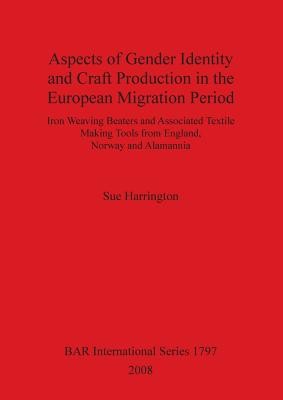
- We will send in 10–14 business days.
- Author: Sue Harrington
- Publisher: British Archaeological Reports Oxford Ltd
- ISBN-10: 1407302183
- ISBN-13: 9781407302188
- Format: 21 x 29.7 x 1 cm, softcover
- Language: English
- SAVE -10% with code: EXTRA
Aspects of Gender Identity and Craft Production in the European Migration Period (e-book) (used book) | bookbook.eu
Reviews
Description
Grave goods show that women were identified as weavers in the early Anglo-Saxon period, rather than specifically spinners, as occurs later. A key piece of weaving equipment found in migration era burials is the iron beater, shaped during this period like a sword. Spear shaped beaters appear later in the seventh century. This study is centred on a corpus of sword and spear shaped beaters not only from Anglo-Saxon England (centred on East Kent), but also from Norway, where the earliest examples are found and from Alamannia. Conclusions are drawn about the processes and social composition of textile production, including any separation of weaving and spinning, and discuss why tools associated with the women's task of weaving should be shaped as objects with masculine associations.
EXTRA 10 % discount with code: EXTRA
The promotion ends in 17d.17:23:14
The discount code is valid when purchasing from 10 €. Discounts do not stack.
- Author: Sue Harrington
- Publisher: British Archaeological Reports Oxford Ltd
- ISBN-10: 1407302183
- ISBN-13: 9781407302188
- Format: 21 x 29.7 x 1 cm, softcover
- Language: English English
Grave goods show that women were identified as weavers in the early Anglo-Saxon period, rather than specifically spinners, as occurs later. A key piece of weaving equipment found in migration era burials is the iron beater, shaped during this period like a sword. Spear shaped beaters appear later in the seventh century. This study is centred on a corpus of sword and spear shaped beaters not only from Anglo-Saxon England (centred on East Kent), but also from Norway, where the earliest examples are found and from Alamannia. Conclusions are drawn about the processes and social composition of textile production, including any separation of weaving and spinning, and discuss why tools associated with the women's task of weaving should be shaped as objects with masculine associations.


Reviews